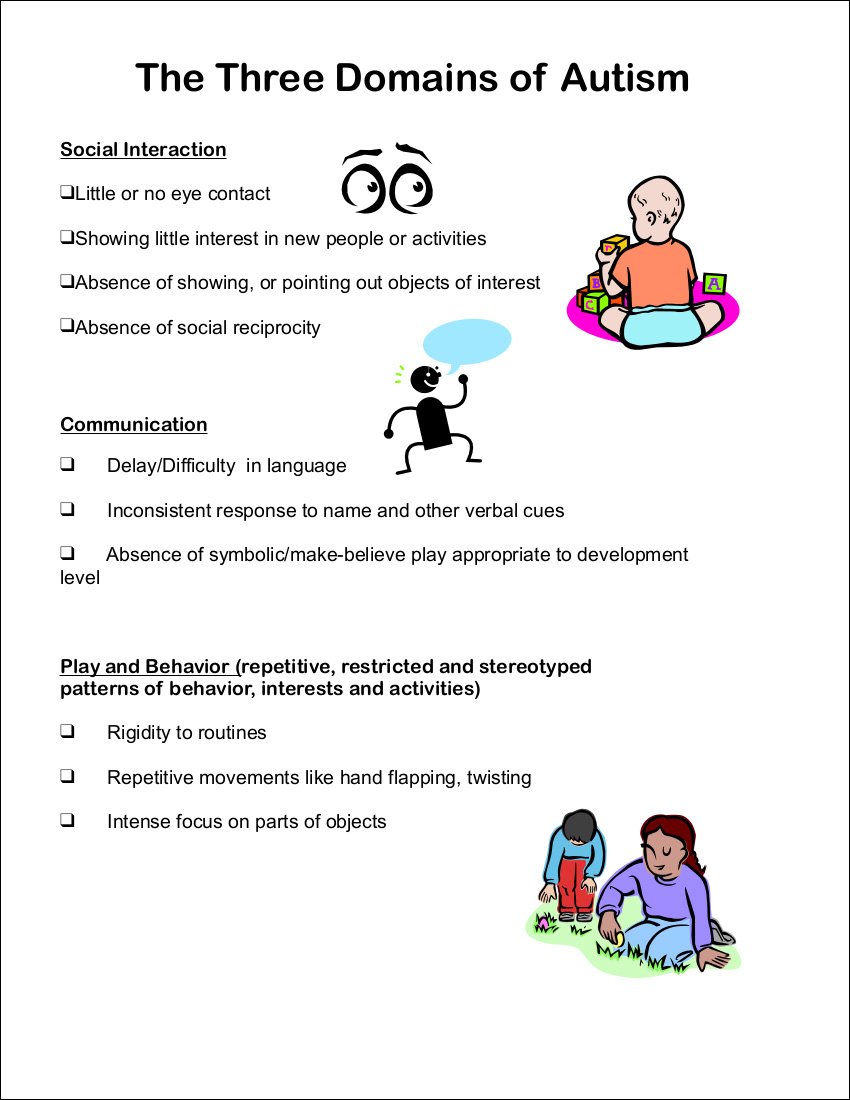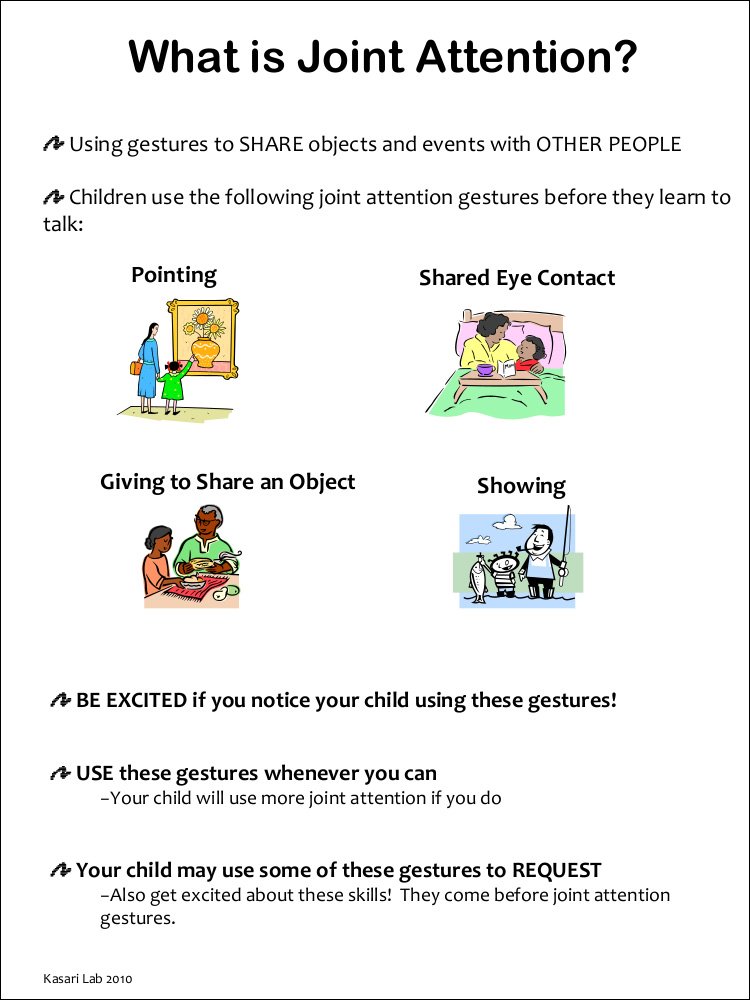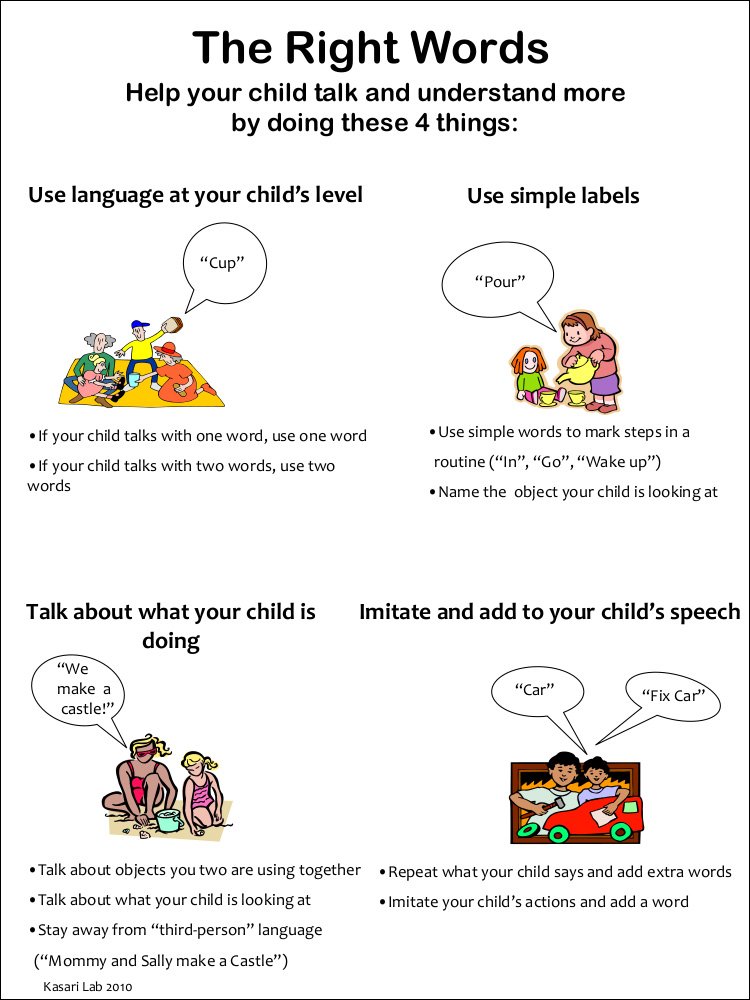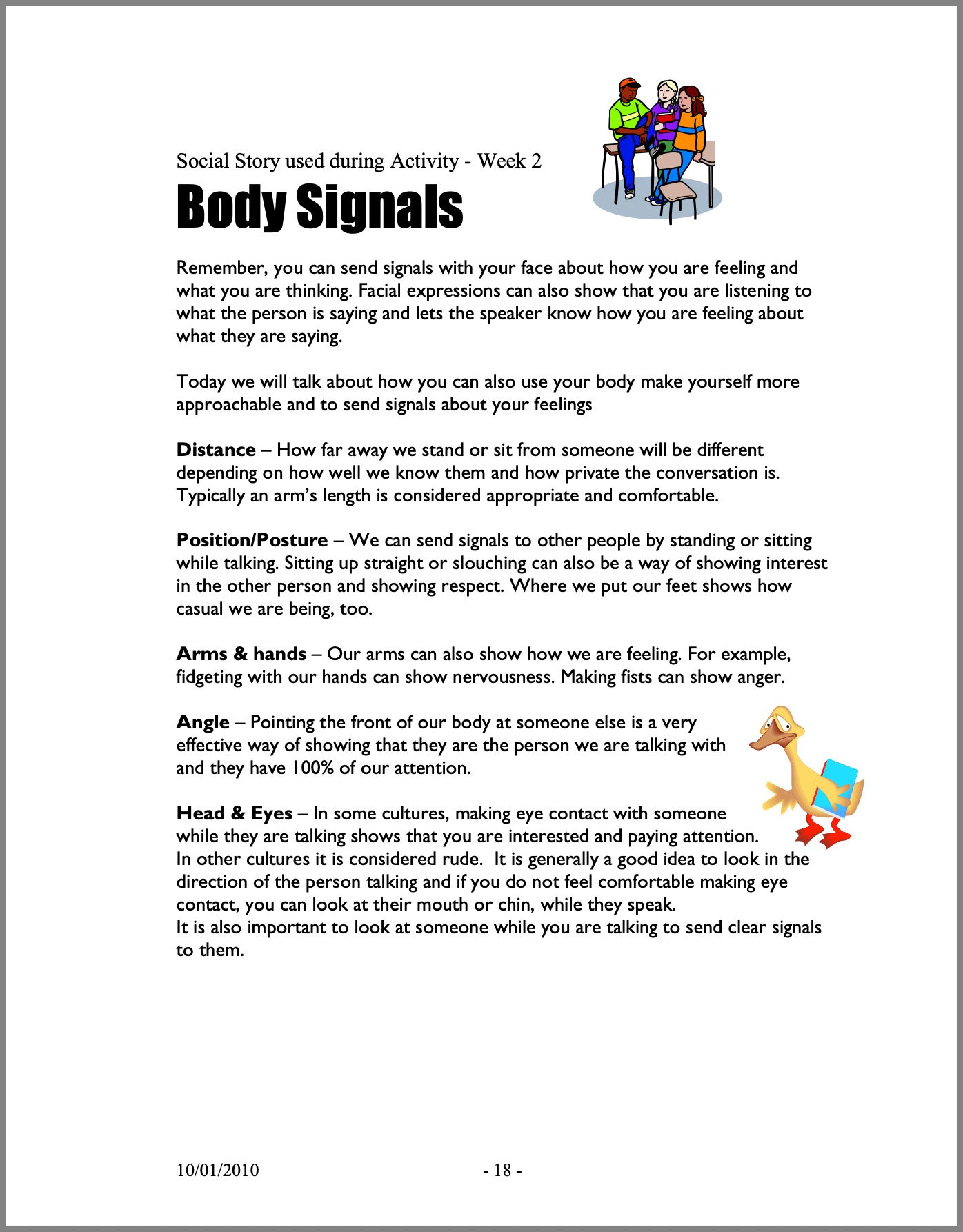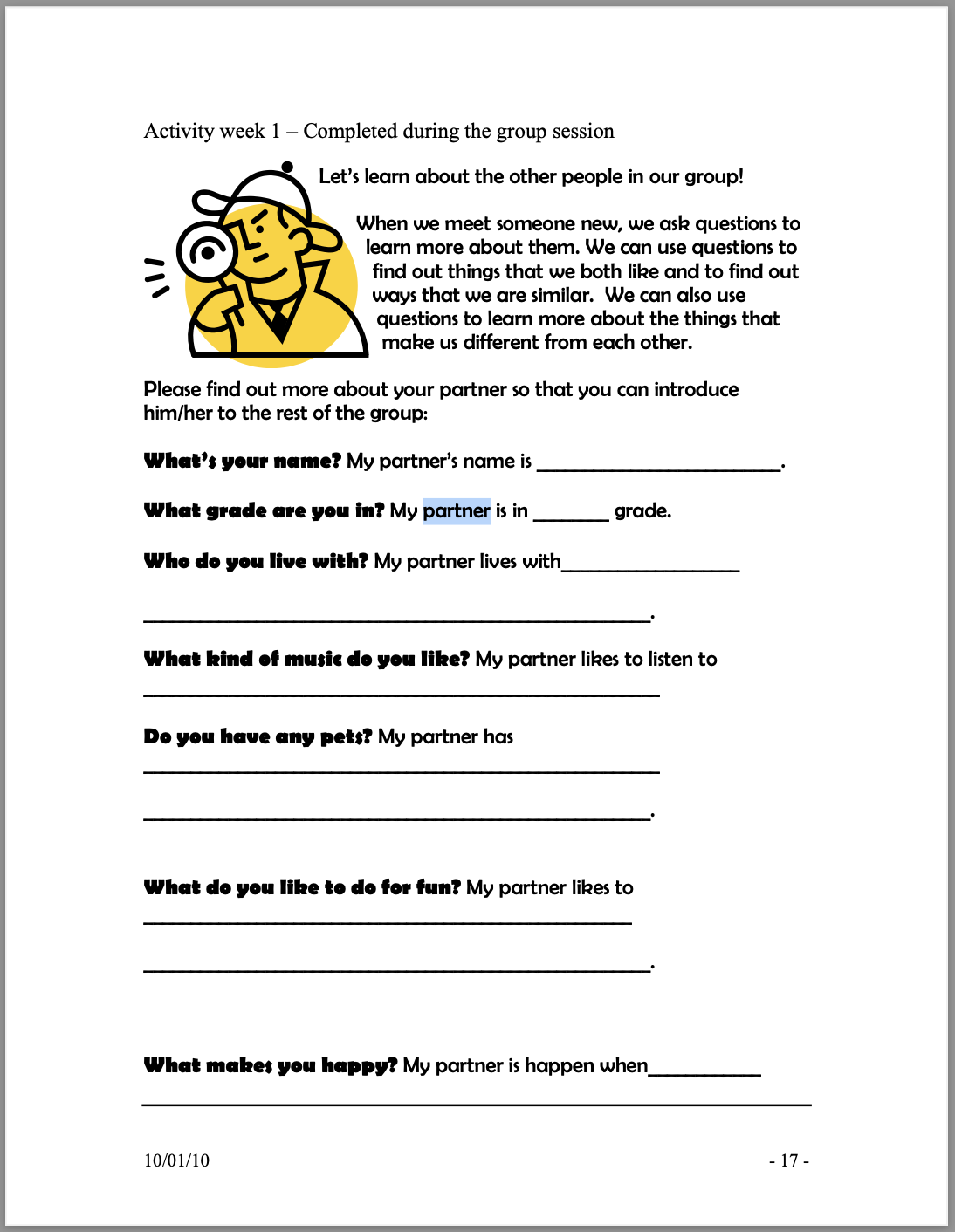AIR-B I
In AIR-B I, five sites across the country worked together on three randomized clinical trials. The work focused on children with autism from underserved communities. These studies looked at two main areas – language delay and social skills.
AIR-B I compared two treatments to see how they worked outside of research settings. The network also developed online tools to reach more people. The results of AIR-B I would inform future treatments.
Participating Sites: University of California Los Angeles, University of Michigan, University of Washington, Florida State University, and Kennedy Krieger Institute.
Parent Mediated Study
Study summary:
This study tested different ways to involve parents in interventions. AIR-B assigned people into two groups.
The first group is a caregiver-education model. Parents meet with an expert to learn about autism services and ask questions.
The second group is a caregiver-mediated model. Parents meet with an expert to learn how to teach joint-attention skills to their child. In this model, the parent, child, and interventionist all work together to practice and help the child engage.
The results are compared so we can learn which style provides the best outcomes.
Background:
Parents need effective tools to help their children with autism communicate and learn language. The current approach is therapist-driven, with less of a focus on parent training. But an intervention done through parents, in the home, may be more useful.
Research Design:
The study takes place over three years, with over one-hundred children ages 2-5 years old. Participants are randomly put into the education or caregiver-mediated style group. In both cases, they meet with an expert for two hours a week over the course of 12 weeks.
Caregiver-education model: In this model, parents work one-on-one or in small groups. An expert provides parents with information and answers their questions. They work with the expert to come up with solutions that meet the needs of their child.
Caregiver-mediated model: In this model, the parent and child work on ‘joint attention’ in each session. The model uses a hands-on approach by teaching parents to maximize engagement. The parent and an expert work together to build routines around every-day experiences such as playing with toys or doing chores. Parents are guided during practice as they motivate their child to communicate at higher levels.
Social Skills in Schools
Study summary:
This study looks at two ways to improve peer relationships at school. In this study, we compared two interventions to improve social outcomes for young children with autism. This took place in small groups during lunch and recess.
The first group is called the SKILLS group, and it is a therapist-led curriculum that teaches skills to children having social difficulties. The second group is called the ENGAGE group and the therapist creates chances for the children to interact with each other naturally.
The results are compared, providing information on how to support social success at school.
Background:
Children with autism are often integrated into general education classrooms. These inclusive classrooms give social opportunities. But children with autism tend to have trouble building peer relationships. The most difficult times are the unstructured and socially driven activities such as lunch and recess.
Without help, children with autism are often isolated. But past studies have been unable to turn social skills training into real-world success. There is a need for tools and treatments that have a lasting impact.
Research Design:
The study includes 120 school-aged children with autism spectrum disorders and their typical peers over 3 years. Participating schools needed to have children with autism who are fully included in general education. We focused on schools in areas with diverse and underserved populations. Children ages 6 to 12 (1st to 5th grade) were split into either the SKILLS or ENGAGE group. Groups had 20-30 minutes sessions, twice a week, over the course of 8 weeks.
SKILLS Model*: The SKILLS model was developed by the Seattle Children’s Hospital Research Foundation. It brings a child with autism and 2~3 other children to a group lesson. Lessons teach social skills and include homework for practice. Sessions take place in the classroom during lunch and on the playground during recess. Children learn skills such as greetings and goodbyes, body language, dealing with emotions, and friendship tips.
ENGAGE Model*: The ENGAGE model was developed by the University of California, Los Angeles. It brings a child with autism and 2~3 other children together for group activities. For the first part, the group does activities in the classroom during lunchtime. Activities include exercises, games, free play, story-telling, and music. A second part takes place on the playground and gives the group a chance to practice in a natural context.
Web-based Study
Study Summary:
AIR-B worked to create online tools for children to help improve social skills. There is evidence that video and computer-based tools can build social skills for children with autism.
By comparing a current group to a wait-list control group, we can see if online tools can improve the outcomes for children with autism. If successful, this program would allow us to serve a much larger audience.
Background:
A key factor in healthy growth is relationships with peers. But many children with autism struggle to develop and maintain these relationships. Useful tools exist but many families do not have access to them. This is especially true in low-income areas far away from universities and autism centers. The AIR-B Network is trying to solve this problem by creating easy to use online services..
Research Design:
This project gives an online tool to a group of children with autism ages 8-12 years old who can read at a 3rd grade level. Half of the children are given access to our online tools. The other half gets access to the tool after a waiting period.
The online tool is an interactive storyboard, similar to a “choose your own adventure” story. For example, they may choose to speak to a peer while waiting for lunch and at the end they are sitting with friends during lunch. If they choose to avoid peers while waiting, then at the end they eat lunch alone. If the child doesn’t like the outcome then they are always able to start over and make a different choice.
This lets the child practice social situations and see the consequences of their choices in a low-risk way.
Teen Social Skills
Study summary:
This study looks at how to improve social skills of teens with autism spectrum disorders. It is similar to the ‘Social Skills in Schools’ study which is also part of AIR-B I. Participants are split into two groups that we compared.
In the SKILLS group, participants are taught social skills. In the ENGAGE group, they work on group projects and practice in real-world situations.
The results are compared so we can understand the types of services that lead to the best outcomes.
Background:
Teens with autism are often part of mainstream classrooms. But there is a lack of good evidence-based tools for skills to meet the social and emotional needs of a diverse student body. This project is one of the first randomized trials of teens doing social skills training while also at school.
Research Design:
We included teens ages 13-19 with an autism spectrum disorder who were currently in middle or high school. The participants were split into the SKILLS or ENGAGE group for hourly sessions, twice a week over an 8 week course.
SKILLS Model*: The manual for SKILLS was developed by the Seattle Children’s Hospital Research Foundation. The SKILLS group teaches social skills with a guided curriculum. Small groups of teens with autism meet and learn about pro-social skills and peer relationships. They also get homework assignments to practice. These sessions take place during lunch.
ENGAGE Model*: The ENGAGE model was developed by University of California, Irvine. The groups include teens with autism and 2~3 of their typical peers. The group learns acceptance and social engagement. They do group activities such as making a film, reviewing books, and creating a mural. The activities are designed to help build social skills in a natural way as the group works together.
This project received leveraged funding from the National Institutes of Health, American Recovery and Reinvestment Act.


